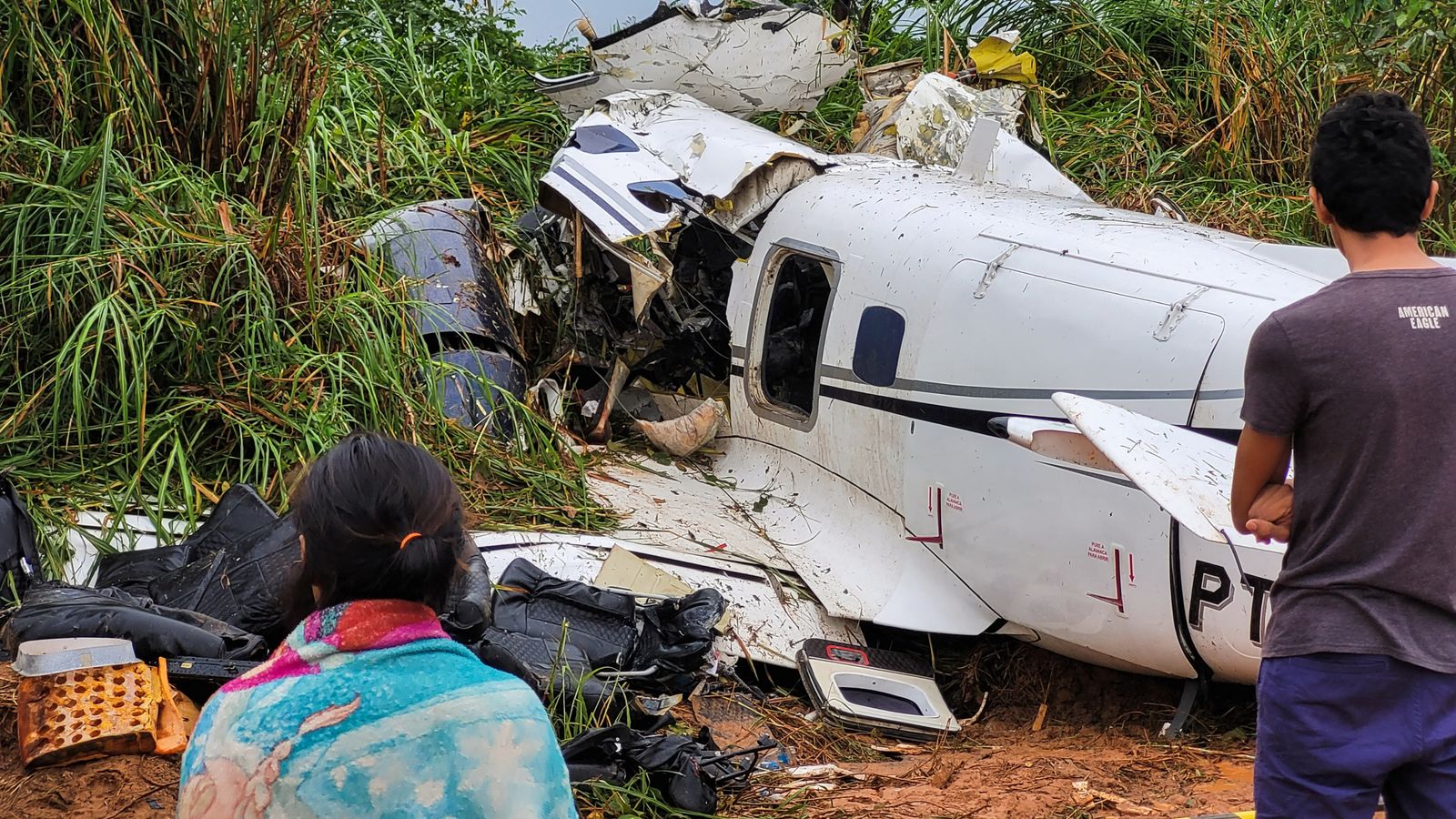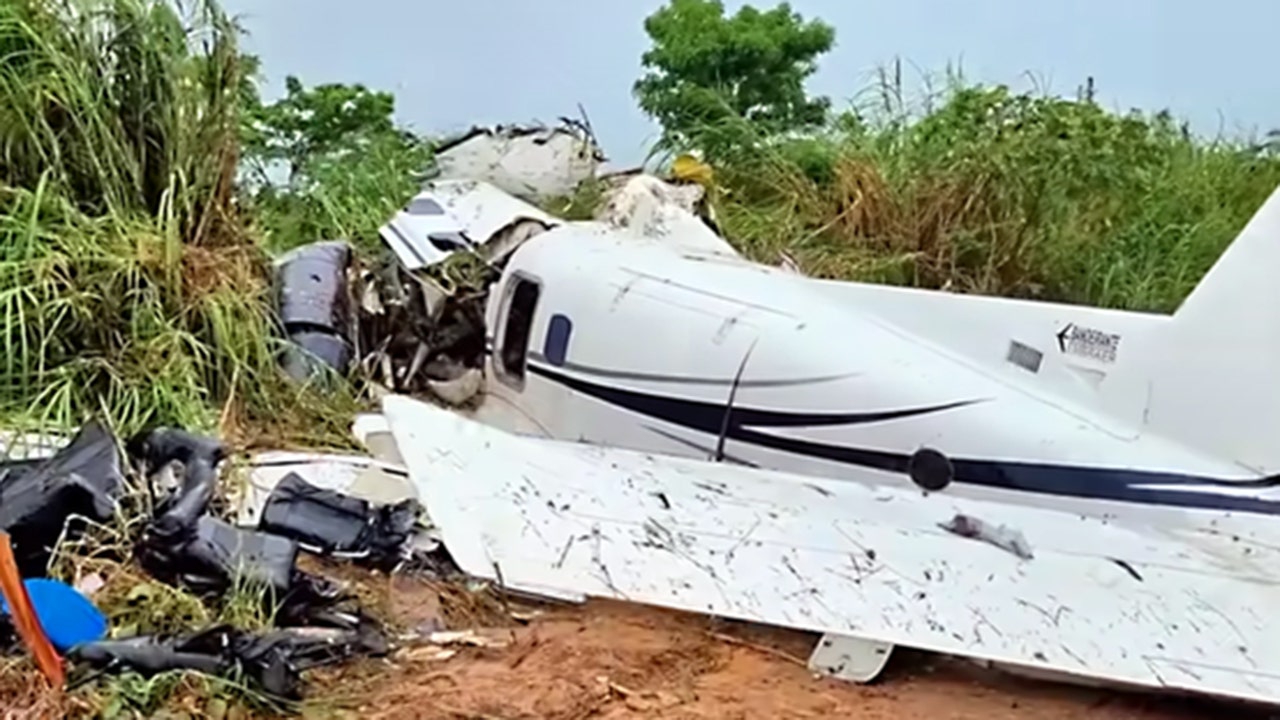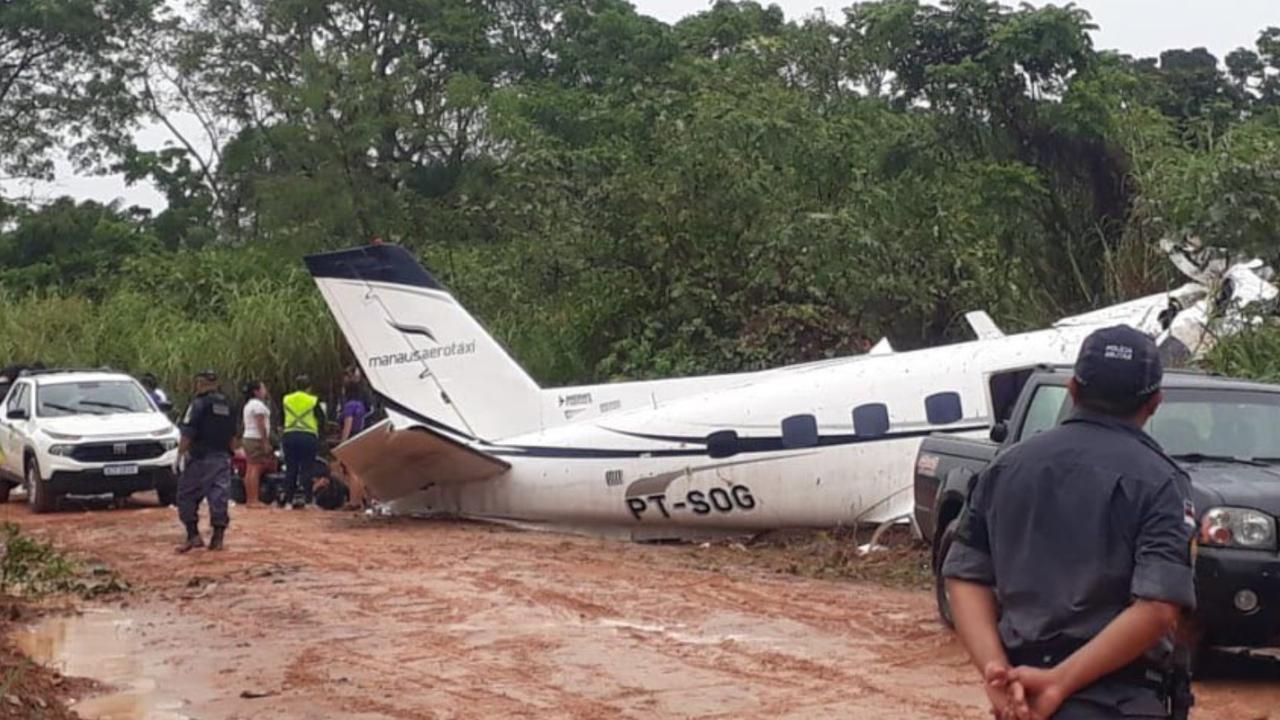History of Plane Crashes in Brazil: Plane In Brazil Crash

Brazil, with its vast geographical expanse and burgeoning aviation industry, has unfortunately witnessed a significant number of plane crashes throughout its history. These tragedies have not only claimed countless lives but also served as crucial catalysts for improvements in aviation safety regulations and technological advancements.
Timeline of Significant Plane Crashes
This section provides a chronological overview of some of the most impactful plane crashes in Brazil’s history, highlighting the events and their consequences.
- 1950: Varig Flight 254: This tragic accident, involving a Douglas DC-4, claimed the lives of 35 passengers and crew members. The crash, attributed to a combination of factors including weather conditions and pilot error, occurred near the city of São Paulo. It served as a wake-up call for the nascent Brazilian aviation industry, highlighting the importance of robust safety protocols and advanced training for pilots.
- 1973: Varig Flight 835: A Boeing 707, operated by Varig, crashed near the island of Tenerife in the Canary Islands, killing 137 people. This incident, while not technically occurring in Brazil, involved a Brazilian airline and significantly impacted the country’s aviation sector. The investigation revealed a complex chain of events leading to the crash, including communication breakdowns and pilot error.
- 1982: Varig Flight 820: A Boeing 737-200, operated by Varig, crashed near the city of Guarujá, killing 137 people. The crash was attributed to a combination of factors including pilot error and a mechanical failure. This event further highlighted the need for rigorous maintenance and safety procedures in the Brazilian aviation industry.
- 1989: TAM Airlines Flight 402: A Fokker F28 Fellowship, operated by TAM Airlines, crashed near the city of São Paulo, killing 99 people. The crash was attributed to a combination of factors including pilot error and a mechanical failure. This incident led to a comprehensive review of the airline’s safety procedures and the implementation of new safety regulations.
- 2007: Gol Transportes Aéreos Flight 1907: A Boeing 737-800, operated by Gol Transportes Aéreos, collided with a Legacy 600 business jet over the Amazon rainforest, killing all 154 passengers and crew members. This tragic event, caused by a combination of factors including pilot error and communication failures, prompted a major overhaul of the country’s air traffic control system and a focus on improving communication and coordination between aircraft.
Causes of Plane Crashes
Understanding the causes of plane crashes is crucial for developing effective safety measures. These crashes can be attributed to a complex interplay of factors, including:
- Pilot Error: Human error remains a significant factor in many plane crashes. This can include mistakes in judgment, decision-making, or technical execution during flight operations. Extensive pilot training, rigorous simulation exercises, and effective crew resource management (CRM) programs are crucial for minimizing pilot error.
- Mechanical Failure: Faulty equipment or mechanical malfunctions can also contribute to plane crashes. This includes issues with engines, aircraft systems, or structural integrity. Regular maintenance, rigorous inspections, and adherence to safety standards are vital for preventing mechanical failures.
- Weather Conditions: Severe weather conditions, such as thunderstorms, turbulence, or fog, can pose significant risks to aircraft operations. Pilots must be trained to handle challenging weather conditions, and aircraft designs must incorporate safety features that mitigate the impact of adverse weather.
- Air Traffic Control Issues: Errors or miscommunications within the air traffic control system can lead to collisions or other accidents. Advanced technology, robust communication protocols, and effective training for air traffic controllers are essential for maintaining safe air traffic management.
- Terrorism: While relatively rare, acts of terrorism can also lead to plane crashes. Enhanced security measures at airports and on board aircraft are essential for mitigating the risk of terrorist attacks.
Impact on Aviation Safety
Plane crashes in Brazil have had a profound impact on the country’s aviation safety landscape. These tragedies have spurred a series of regulatory changes, technological advancements, and safety initiatives aimed at preventing future accidents.
- Strengthening Aviation Regulations: Following major crashes, Brazil has implemented stricter regulations and safety standards for airlines, pilots, and aircraft maintenance. These regulations encompass areas such as pilot training, aircraft certification, maintenance procedures, and air traffic control protocols.
- Technological Advancements: Technological advancements have played a crucial role in enhancing aviation safety. This includes the development of sophisticated aircraft systems, advanced navigation and communication technologies, and improved flight data recorders (black boxes) for accident investigations.
- Safety Initiatives: Brazil has implemented various safety initiatives, including the establishment of aviation safety agencies, the creation of pilot training programs, and the promotion of best practices within the aviation industry. These initiatives aim to foster a culture of safety and continuous improvement.
Role of Regulations and Technological Advancements
Regulations and technological advancements have been instrumental in mitigating the risk of plane crashes in Brazil.
- Regulations: Stricter regulations have helped to standardize safety practices across the aviation industry, ensuring that airlines, pilots, and maintenance personnel adhere to high safety standards. These regulations encompass a wide range of aspects, including pilot training, aircraft maintenance, and air traffic control procedures. By setting clear guidelines and enforcing compliance, regulations have played a significant role in enhancing aviation safety.
- Technological Advancements: Technological advancements have provided pilots and air traffic controllers with sophisticated tools to navigate safely, communicate effectively, and monitor aircraft performance. This includes advanced navigation systems, communication technologies, and flight data recorders. These technologies have helped to improve situational awareness, minimize human error, and facilitate effective accident investigations.
Notable Plane Crashes in Brazil
Brazil, a vast and diverse nation, has unfortunately witnessed its share of tragic aviation accidents throughout its history. These events have left an indelible mark on the country, prompting investigations and safety improvements within the aviation industry.
Notable Plane Crashes in Brazil
The following table Artikels some of the most impactful plane crashes in Brazil, highlighting the circumstances, aftermath, and contributing factors:
| Date | Location | Aircraft Type | Casualties | Primary Cause |
|---|---|---|---|---|
| September 3, 1989 | Rio de Janeiro | VASP Boeing 737-200 | 121 | Pilot error, leading to a stall and crash into a mountainside. |
| July 31, 1982 | Goiânia | Varig Boeing 737-200 | 137 | Pilot error, leading to a descent below the minimum safe altitude and a crash into a sugarcane field. |
| September 29, 1973 | São Paulo | Varig Boeing 707-320C | 135 | Mechanical failure in the aircraft’s hydraulic system, leading to a loss of control and crash into a residential area. |
| January 3, 1973 | Rio de Janeiro | Varig Boeing 707-320C | 131 | Pilot error, leading to a descent below the minimum safe altitude and a crash into a mountainside. |
| September 29, 1961 | Rio de Janeiro | Real-Aerovias Douglas DC-3 | 38 | Mechanical failure in the aircraft’s engine, leading to a loss of control and crash into a mountainside. |
These incidents serve as stark reminders of the importance of rigorous safety protocols, ongoing maintenance, and comprehensive pilot training within the aviation industry. Each crash, despite its tragic consequences, has contributed to a greater understanding of aviation safety and has prompted improvements in aircraft design, operational procedures, and regulatory oversight.
Aviation Safety Measures in Brazil

Brazil’s aviation industry has seen significant growth in recent years, leading to an increased focus on ensuring safety standards. The country’s aviation authorities have implemented a comprehensive set of regulations and protocols to enhance safety, encompassing various aspects of air travel.
Current Safety Regulations and Protocols
Brazil’s aviation safety regulations are governed by the National Civil Aviation Agency (ANAC), which is responsible for setting and enforcing standards across the industry. The regulations cover a wide range of aspects, including aircraft maintenance, pilot training, air traffic control, and airport infrastructure.
ANAC’s regulations are based on international standards, such as those set by the International Civil Aviation Organization (ICAO). These standards are designed to ensure a consistent level of safety across the global aviation network.
Comparison with International Standards and Areas for Improvement
Brazil’s aviation safety regulations generally align with international standards. However, there are areas where improvements can be made to further enhance safety.
- Aircraft Maintenance: While Brazil has stringent maintenance regulations, there have been concerns about the enforcement of these regulations, particularly for smaller airlines. Strengthening enforcement and ensuring adequate resources for maintenance inspections are crucial.
- Pilot Training: Pilot training standards in Brazil are generally good. However, there is a need to address the growing demand for pilots by ensuring that training programs are robust and adequately funded.
- Air Traffic Control: Brazil’s air traffic control system has faced challenges, including infrastructure limitations and staffing shortages. Investing in modernizing air traffic control infrastructure and increasing the number of qualified air traffic controllers are essential steps to improve safety.
Initiatives to Enhance Safety, Plane in brazil crash
The Brazilian government and aviation authorities have taken several initiatives to enhance safety in the aviation industry.
- Modernization of Air Traffic Control Systems: The government has invested in upgrading air traffic control infrastructure, including the implementation of new radar systems and communication technologies.
- Safety Audits and Inspections: ANAC conducts regular safety audits and inspections of airlines and airports to ensure compliance with regulations.
- Pilot Training Programs: The government has supported initiatives to enhance pilot training programs, including the development of new simulators and training facilities.
- Data Analysis and Safety Reporting: ANAC has implemented a system for collecting and analyzing safety data to identify potential risks and implement corrective measures.
Plane in brazil crash – The plane crash in Brazil was a real tragedy, man. It’s like, seriously messed up. It’s crazy how something like that can happen. You know, it reminds me of those times when Trump would hold press conferences and just go off on a tangent about whatever was on his mind.
You could never tell what he was going to say next, kinda like how you can’t predict when a plane is going to crash. Those press conferences were wild, but I guess you could say they were kind of entertaining.
Anyway, it’s just a bummer about that plane crash in Brazil, man. Seriously.
The news about the plane crash in Brazil is seriously tragic, man. It’s a total bummer. But hey, at least we’ve got some serious political drama going on with presidential debate time coming up. Hopefully, the candidates can keep their cool, unlike the plane that went down in Brazil.
It’s a real bummer that we’re dealing with both tragedies and political tension at the same time.

